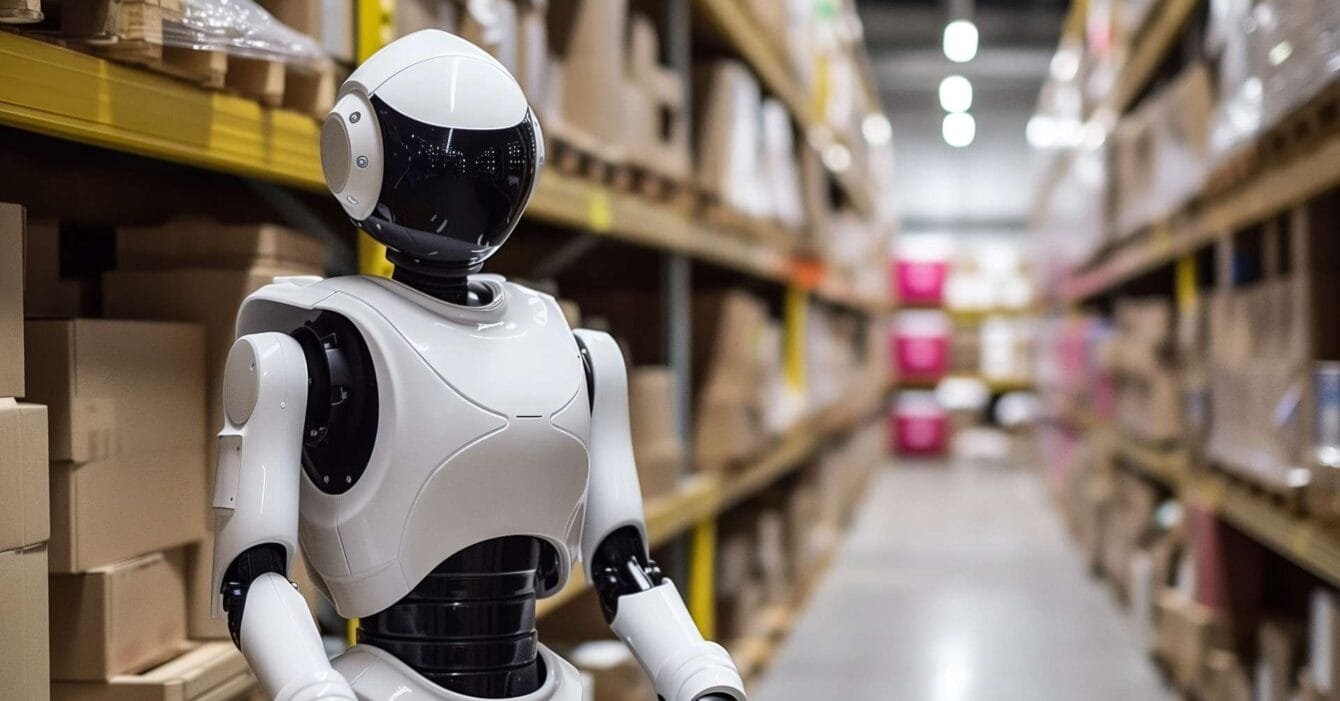The Rise of Automation in Saudi Arabia’s Warehousing Sector
As Saudi Arabia rapidly progresses toward its Vision 2030 goals, automation has become a key enabler in transforming the nation’s logistics and warehousing industry. The country, strategically positioned between Europe, Africa, and Asia, is using automation technologies to increase operational efficiency, reduce costs, and improve its position as a global logistics hub. The impact of automation in logistics has been substantial, especially as the nation seeks to diversify its economy beyond oil, making warehousing and logistics vital components in its growth strategy.

Recent research has shown that Saudi Arabia’s warehousing automation market grew steadily with a compound annual growth rate (CAGR) of 6.6% between 2016 and 2022. The growth trajectory is expected to accelerate significantly, reaching a projected CAGR of 18.8% by 2027. This anticipated growth points to the importance of adopting automation technologies to remain competitive in an increasingly digital global economy.
The Role of Automation in the Future of Saudi Logistics
With the rising demands in sectors such as e-commerce, pharmaceuticals, and retail, automation in logistics has proven to be indispensable. These technologies are streamlining warehousing operations, enabling businesses to handle larger volumes of products and meet rising customer expectations for fast and reliable service.
Automation is particularly beneficial in managing growing demands in cities like Jeddah, Riyadh, and Dammam. These cities are key logistics hubs, providing over 70 million square meters of dedicated warehousing space. As the warehousing sector grows, it will need more sophisticated automation technologies to meet the logistical needs of businesses operating in these regions.
Key Technologies Driving Automation in Saudi Warehousing

1. Automated Storage and Retrieval Systems (AS/RS)
One of the most significant advancements driving efficiency in Saudi Arabia’s warehousing sector is the adoption of Automated Storage and Retrieval Systems (AS/RS). These systems are designed to optimize storage space, enhance inventory management, and automate the retrieval process. In a large warehouse, AS/RS can significantly reduce the time needed to locate and retrieve goods, enhancing productivity.
AS/RS is especially useful in cold storage facilities, where precise control over temperature is critical. These systems minimize human intervention, ensuring that temperature-sensitive products, such as pharmaceuticals and perishable foods, are handled with care. Cold storage demand has surged in Saudi Arabia, and AS/RS is instrumental in meeting the growing needs of sectors like healthcare and food.
2. Warehouse Management Systems (WMS)
Warehouse Management Systems (WMS) are essential tools for automating warehouse operations. These systems help in tracking, monitoring, and managing inventory, reducing the chance of human errors and optimizing warehouse workflows. In Saudi Arabia, WMS adoption has been accelerating, particularly in major logistics hubs. WMS software enables real-time monitoring of inventory, ensuring better forecasting and reducing delays in order fulfillment.
3. Robotics and Artificial Intelligence (AI)
Robotics and AI technologies are revolutionizing sorting and shipping operations in Saudi Arabia’s warehouses. With the help of AI-driven robots, companies can sort and organize goods faster, reducing human errors and speeding up the shipping process. Automated Guided Vehicles (AGVs) and Autonomous Mobile Robots (AMRs) are increasingly being deployed in warehouses to transport goods, reducing the need for manual labor and enhancing efficiency.
AGVs follow pre-programmed routes, transporting goods within the warehouse without human intervention. Meanwhile, AMRs offer greater flexibility as they can navigate changing warehouse environments, adjusting to new routes in real time. Both AGVs and AMRs are becoming essential tools in handling large volumes of goods efficiently in Saudi Arabia’s expanding warehousing sector.
4. Internet of Things (IoT)
The Internet of Things (IoT) is playing a crucial role in improving the efficiency of logistics operations by enabling real-time tracking and monitoring. IoT devices embedded into products and shipments provide warehouse managers with insights into the location and condition of goods throughout the supply chain. This visibility allows for faster decision-making, reducing delays and optimizing warehouse operations.
With IoT in place, companies in Saudi Arabia are able to maintain high service levels, ensuring that products are delivered on time and in good condition. This technology is particularly beneficial for temperature-sensitive shipments in sectors like pharmaceuticals, where real-time monitoring is essential for maintaining product quality.
Challenges and Opportunities in Saudi Arabia’s Logistics Sector
While automation technologies are driving significant advancements, the logistics sector in Saudi Arabia faces several challenges. One such challenge is the high upfront cost of implementing automation technologies. For small and medium-sized enterprises (SMEs), the financial investment required for these systems can be prohibitive.
However, the government’s commitment to Vision 2030 is creating opportunities for businesses to adopt these technologies. Initiatives such as the National Industrial Development and Logistics Program (NIDLP) are designed to support businesses by investing in logistics infrastructure, providing incentives for adopting automation technologies, and creating a favorable environment for business growth.
Conclusion: The Future of Automated Logistics in Saudi Arabia
As automation technologies continue to advance, Saudi Arabia’s logistics sector is well-positioned to become a leader in the global market. By embracing warehouse automation, robotics, IoT, and other cutting-edge technologies, the country is enhancing its logistics capabilities, reducing costs, and improving overall efficiency. With these technologies, Saudi Arabia is moving closer to its Vision 2030 goals of economic diversification and becoming a key player in the global logistics arena.




